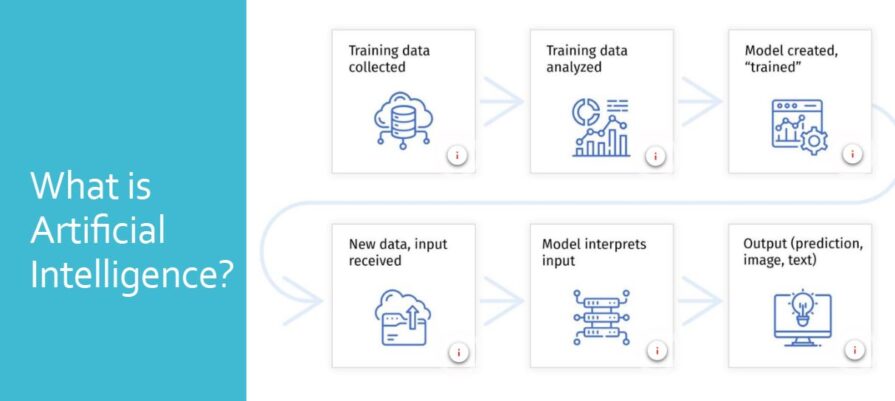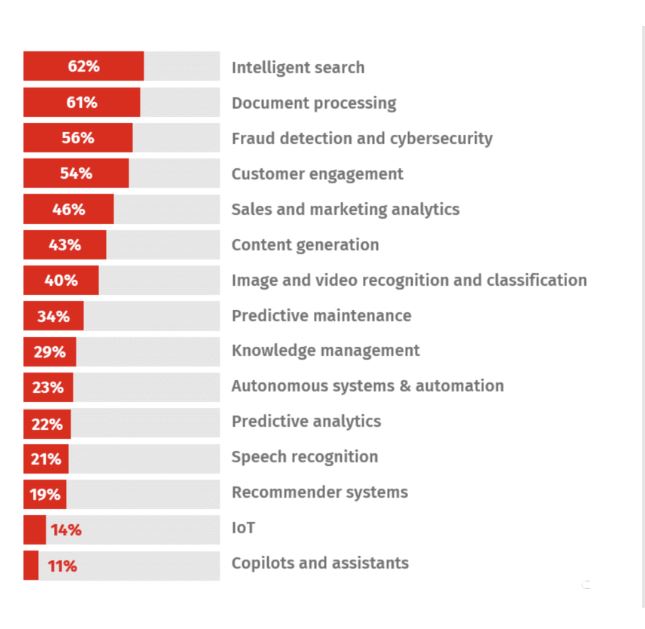On Thursday October 31st, Guest speaker, Bart Dorlandt, who is a senior IT specialist developing solutions for business cloud computing needs, gave JCC members a presentation on de-mystifying AI. Bart works for Rackspace which provides worldwide cloud services to companies and government agencies. He started by introducing himself and his company, which uses AI technology in cloud service strategies for its clients. Given the profile of the JCC members, he focused his presentation on explaining what AI is, and what it can and cannot do today. He started with a description of Artificial Intelligence :

Basically, it’s a computer system which instead of being programmed step by step by lines of code, is trained to recognise patterns in text, images – any form of digital information, and through this process “learn” and simulate human intelligence. It can predict (e.g. what is likely to be the next word in a sentence), classify (e.g. types of plant, person, car ) recommend (e.g. holidays – just for you!), manipulate text (summaries, translations) and images (make an image of a cat eating an ice-cream on the moon). Currently, it is mostly used for intelligent search, document processing and interestingly, fraud detection. Bad guys use AI to fool people and AI is used to catch the bad guys. Set a thief to catch a thief.

However, AI is not capable of creativity. Everything it does is the result of training on existing information. It can make music in the style of Beethoven, and art in the style of Van Gogh, using the existing work of these people as its basis. But it cannot create a new type of music, a new painting technique or a new theory of the universe.
AI does not have emotional intelligence. It does not understand ethics. AI can mimic empathy and human emotions, but cannot feel them. (Editor’s note: Here is an interesting article on the subject: Why AI Will Never Replace Our Emotional Intelligence )
AI is not capable of critical thinking: It cannot make considered judgements about issues and set them in a context with background information. It does not understand the subtleties of human language and interactions… because it cannot “understand”
What can AI do for us?
- Personal Assistants – robots as companions and carers for the elderly.
- Health and Fitness – tracking and analysing vital signs; identifying tumors in X-rays.
- Entertainment – Faster and better CGI in movies, AI generated music, tailor-made audience preferences.
- Education – Tailored for the individual, innovative teaching and learning practices.
- Productivity – Speed up document preparation, minutes, reports, summaries, logistics etc.
- Safety and Security – detection of fraud, identification of criminals e.g. through activity patterns and facial recognition, identification of components which may wear out and eventually fail.
- Shopping – Analyse a shopper’s potential purchases and likes.
- Travel – A holiday made just for you, your budget and preferences.
JCC members questioned whether, now that AI has been given the ability to control a user’s computer, couldn’t it steal company secrets ? They also raised the problem of AI-generated fake information (hallucinations) both in education and in the wider world. The problem (as always) is not the technology, but how people use it. A major danger with AI is that human beings anthropomorphise, that is, ascribe human characteristics to animals, gods and even inanimate things. There is a lot of hype about AI in the media and many people may believe that it really is intelligent in the human sense, or even worse, more intelligent than human beings. In fact, it is not intelligent at all, just a convincing simulation.
(Summary by Chris Betterton-Jones adapted from Bart Dolandt’s presentation slides)
